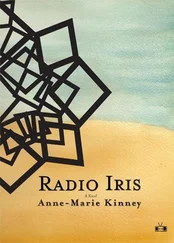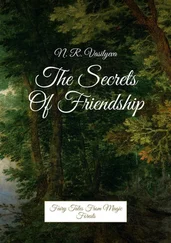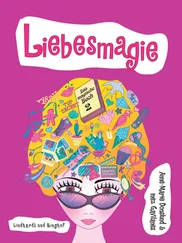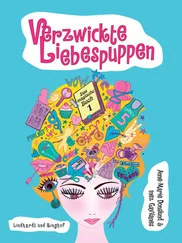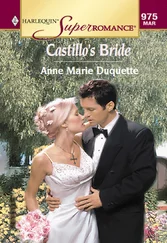1 ...7 8 9 11 12 13 ...23 Implicit within the final question is the issue of where people are currently at, and what first steps can be taken towards processes of transformation. Communication is a key focus. For those who see practical theology exclusively as application, this last question concerning means and strategies is thought to be the totality of practical theology. Yet strategic practical theology is broader than application, and includes public as well as ecclesial dimensions. 91
Rich practical thinking contributes to the life of the church, and to the common good in the broader community. Thus, a strategic practical theology of friendship is concerned with the praxis of friendship in the world, as well as within faith communities. To this end, the fourth phase of this research consists of a ninth chapter outlining ideal praxis, along with strategies for encouraging such praxis.
The conclusion draws together the findings of the previous chapters in a summary of practices and understandings that contribute towards the development of a practical theology of friendship. An Appendix outlines the development of correlational methodology, identifying objections, challenges, and strengths of this approach to theological reflection.
1 1See, for example, Māori Marsden, The Woven Universe: Selected Readings of Rev. Māori Marsden (Ōtaki, New Zealand: The Estate of Rev. Māori Marsden, 2003).
2 2Aotearoa is now often used as the Māori name for the entirety of New Zealand. Alternatively, Aotearoa refers to the North Island and Te Waipounamu to the South Island. Readers who are not familiar with te reo Māori (the Māori language) may wish to consult the online Māori dictionary for the pronunciation of Māori words: https://maoridictionary.co.nz. As a mark of respect, and for consistency, macrons have been added to Māori in older works.
3 3The Woolley family, from Somerset and Wiltshire, must have arrived during the 1840s also. Subsequently the Hunter family from Scotland arrived in the Port of Lyttelton on The Sir George Pollock in 1851. The Tindills arrived from Gravesend into Auckland in 1865 on The Ulcoats. The Marples arrived from Derbyshire into Nelson on Mataura in 1875. Margaret McMullen from Ireland arrived on The Ionic into Wellington in 1884 along with her mother; it is possible that Jean Baptiste Grondin from the Reunion Islands was a mariner on the same ship. James Brown arrived in 1860 from the United States on The Blue Jacket, apparently in search of gold. Thus far, I have not been able to ascertain when the Fawcett or Merriman families arrived from Yorkshire, Durham, and Ireland, nor when John Maindonald emigrated from Guernsey, his future daughter-in-law from Denmark, and George McDonald from parts currently unknown.
4 4Locations included: St. Michael’s Anglican Church and Marae, Te Papa-i-Oea (Palmerston North), with speakers including Sam Chapman, Muri Thompson, and Norman Tawhio; Ngā Tapuwae College Marae, Tāmaki Makaurau (Auckland), two weeks in a supportive leadership role for a multicultural youth dance and drama team; Ōrongomai Marae, Te Awa Kairangi ki Uta (Upper Hutt), with Monte and Linda Ohia; Koraunui Marae, Koraunui (Stokes Valley), with the school Kapahaka team; Hongoeka Marae, Porirua, bicultural education, with Dick Grace. It was also a privilege to participate in the Inaugural World Christian Indigenous Peoples Hui (Rotorua), organized by Dr. Monte Ohia, in 1996, and to learn from storytelling by and conversations with Sir Kim Workman.
5 5The gift of friendship and collaboration with Dana Maniapoto has been particularly enriching. With encouragement from a number of us, Dana initiated the development of a small team to facilitate bicultural understandings within our faith community. I was asked by Dana to be a participant, and also to assist her with the planning and facilitating of these small team meetings, trialling a process that could then be facilitated with the wider faith community. We initially undertook activities to facilitate a greater understanding of our own cultures, before covering Treaty issues. This was a rich learning experience for all of us. On a more personal level, I remember being particularly struck with the encouragement Dana received from her whānau (extended family) to pursue her vocation on behalf of her people.
6 6Department of Health and Human Services, “Updated restrictions – 11.59pm Wednesday 22 July 2020,” Victoria State Government, https://www.dhhs.vic.gov.au/updates/coronavirus-covid-19/updated-restrictions-1159pm-wednesday-22-july-2020. Accessed 22 September 2020.
7 7Linda Besner, “Friendship is Magic. But is it Legally Protected? In the Postpandemic World, We Need a Clearer Answer,” Globe and Mail, https://www.theglobeandmail.com/opinion/article-friendship-is-magic-but-is-it-legally-protected-in-the-postpandemic. Accessed 23 January 2021.
8 8“Health Equity Considerations and Racial and Ethnic Minority Groups,” Centers for Disease Control and Prevention, https://www.cdc.gov/coronavirus/2019-ncov/community/health-equity/race-ethnicity.html. Accessed 22 September 2020.
9 9Elisabeth Moltmann-Wendel, Rediscovering Friendship: Awakening to the Power and Promise of Women’s Friendships, trans. John Bowden (Minneapolis: Fortress, 2001), 34.
10 10See Brian Patrick McGuire, Friendship and Community: The Monastic Experience, 350–1250, 2nd ed. (Ithaca: Cornell University Press, 2010), 339.
11 11McGuire, Friendship and Community, 427.
12 12Guido de Graaff, Politics in Friendship: A Theological Account (London: T&T Clark, 2014), 4.
13 13Bonnie J. Miller-McLemore, Christian Theology in Practice: Discovering a Discipline (Grand Rapids: Eerdmans, 2012), 2. Italics original.
14 14John H. Perkins, “Practical Theology: What Will it Become?” The Christian Century, 1 February 1984, 116.
15 15Bonnie J. Miller-McLemore, “Introduction: The Contributions of Practical Theology,” in The Wiley Blackwell Companion to Practical Theology, ed. Bonnie J. Miller-McLemore (Malden: Wiley-Blackwell, 2012), 5.
16 16Richard R. Osmer, Practical Theology: An Introduction (Grand Rapids: Eerdmans, 2008), ix–x. As practical theology experienced a resurgence in the 1980s, various developments in liberation theologies (European and Latin American) contributed to “a strong turn to a more public, church-world focus.” Claire Wolfteich, “Time Poverty, Women’s Labor and Catholic Social Teaching: A Practical Theological Exploration,” Journal of Moral Theology 2, no. 2 (2013): 42.
17 17Eschatology is concerned with questions of ultimate destiny.
18 18Miller-McLemore, Christian Theology in Practice, 103.
19 19Terry A. Veling, Practical Theology: On Earth as it is in Heaven (Maryknoll, NY: Orbis Books, 2005), 3.
20 20Gerben Heitink, Practical Theology: History, Theory, Action Domains, trans. Reinder Bruinsma (Grand Rapids: Eerdmans, 1999), 4–5.
21 21Miller-McLemore, Christian Theology in Practice, 103–104.
22 22Don S. Browning, Equality and the Family: A Fundamental, Practical Theology of Children, Mothers, and Fathers in Modern Societies (Grand Rapids: Eerdmans, 2007), 3.
23 23See, for example, Robert L. Smith, “Black Phronēsis as Theological Resource: Recovering the Practical Wisdom of Black Faith Communities,” Black Theology: An International Journal 6, no. 2 (2008): 179, 180.
24 24Hans-Georg Gadamer, Truth and Method, trans. Joel Weinsheimer and Donald Marshall, 2nd rev. ed. (New York: Continuum, 2004), 289.
25 25Browning, Equality and the Family, 8.
26 26See Pierre Bourdieu, Outline of a Theory of Practice (Cambridge: Cambridge University Press, 1977).
27 27Etienne Wenger, Communities of Practice: Learning, Meaning, and Identity (Cambridge: Cambridge University Press, 1998), 47.
Читать дальше

